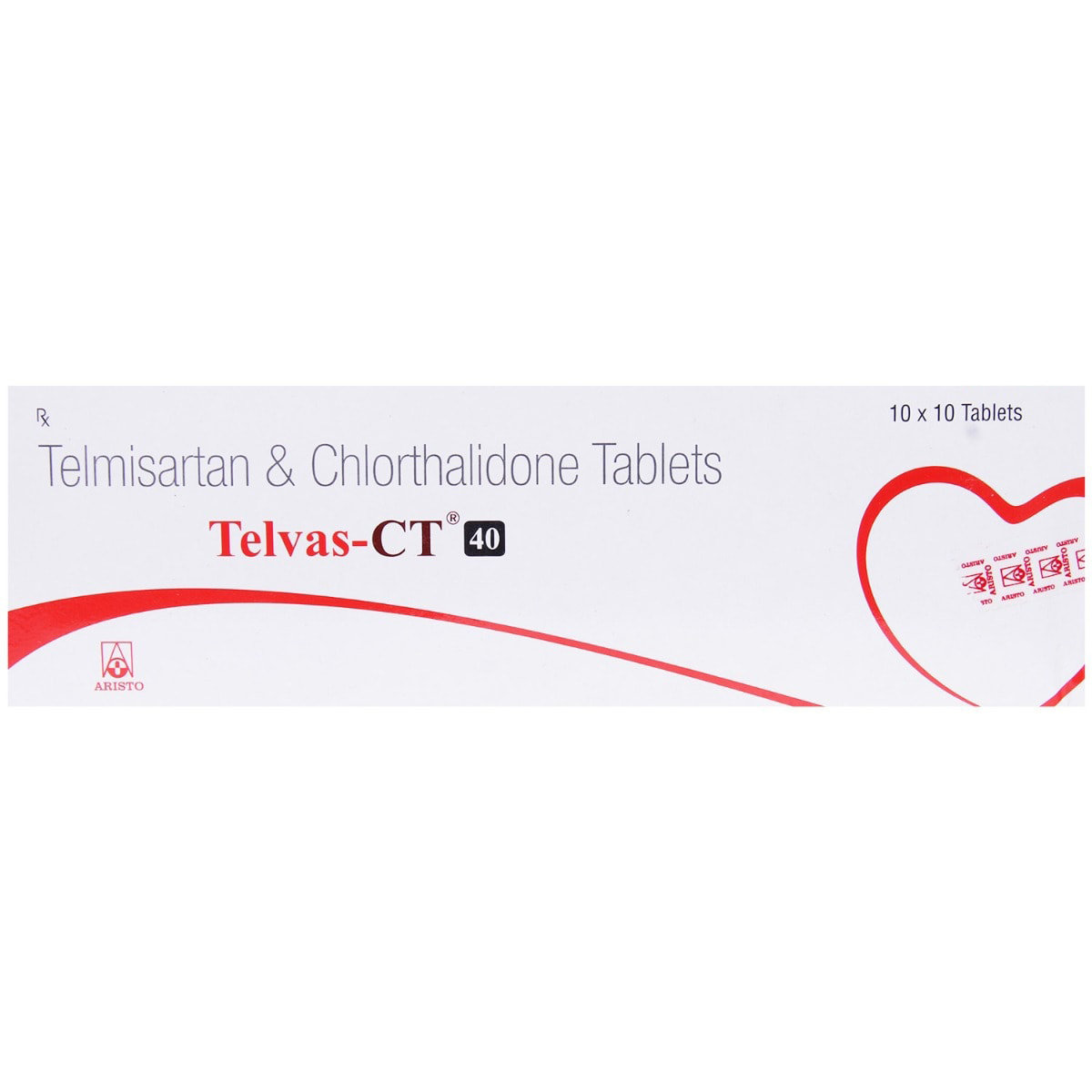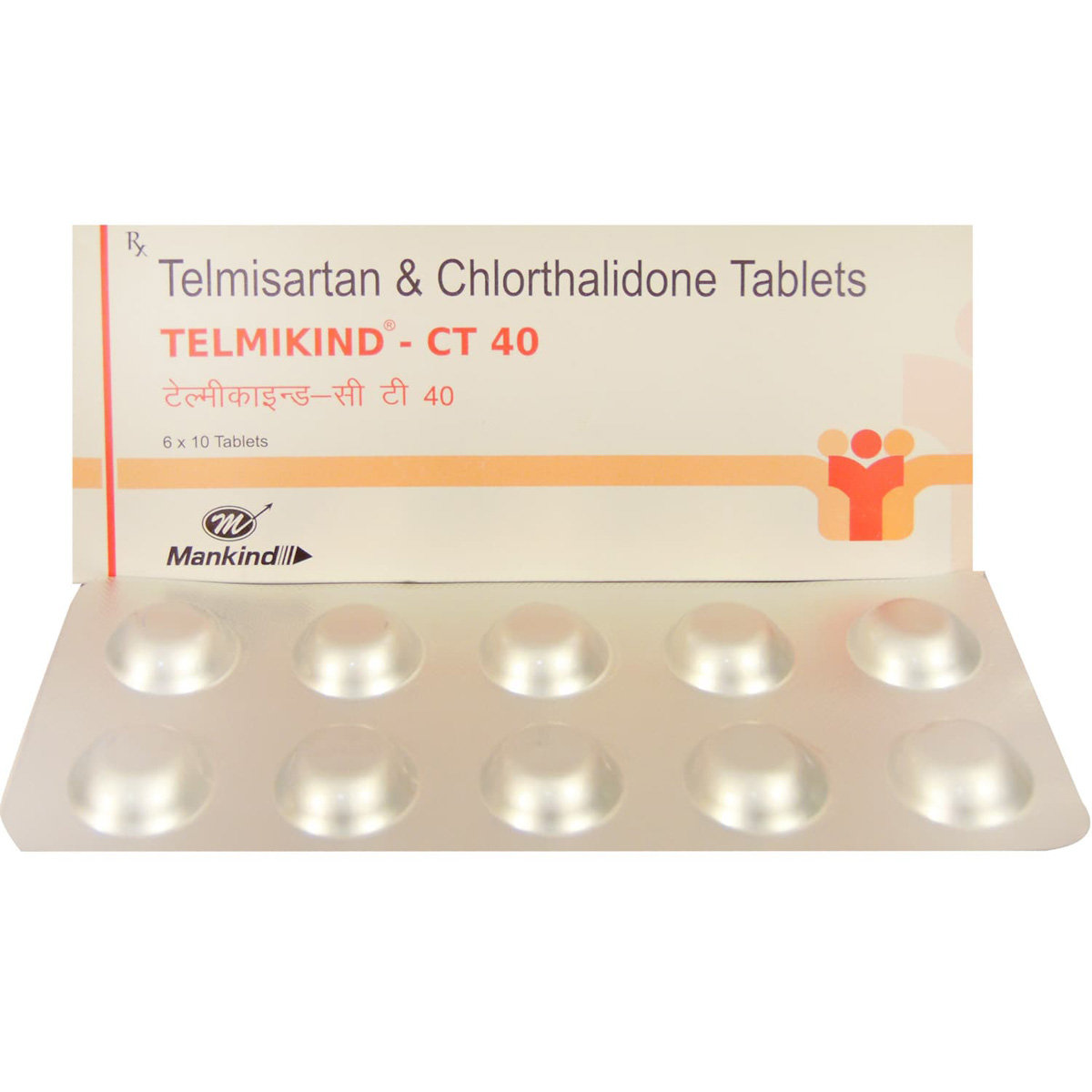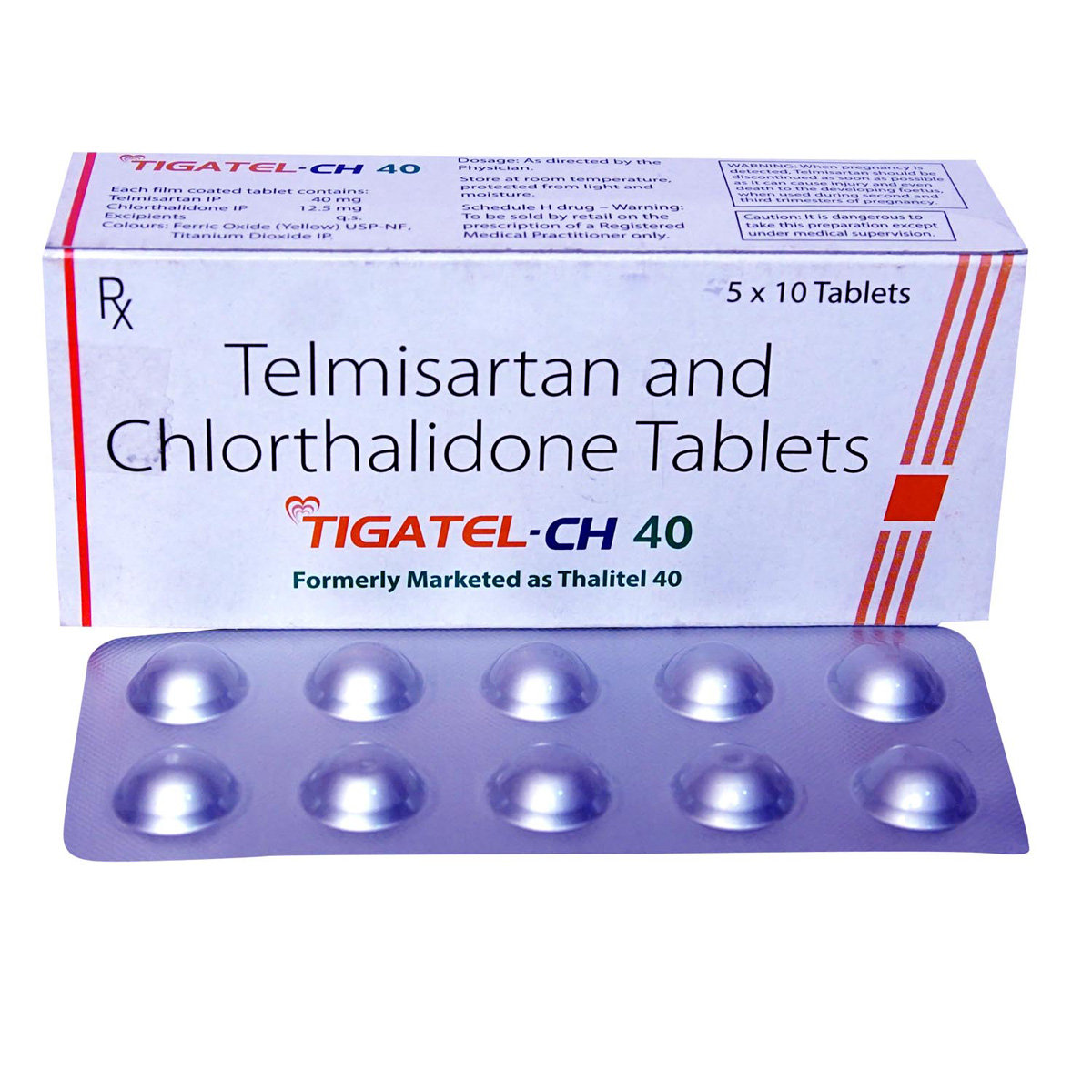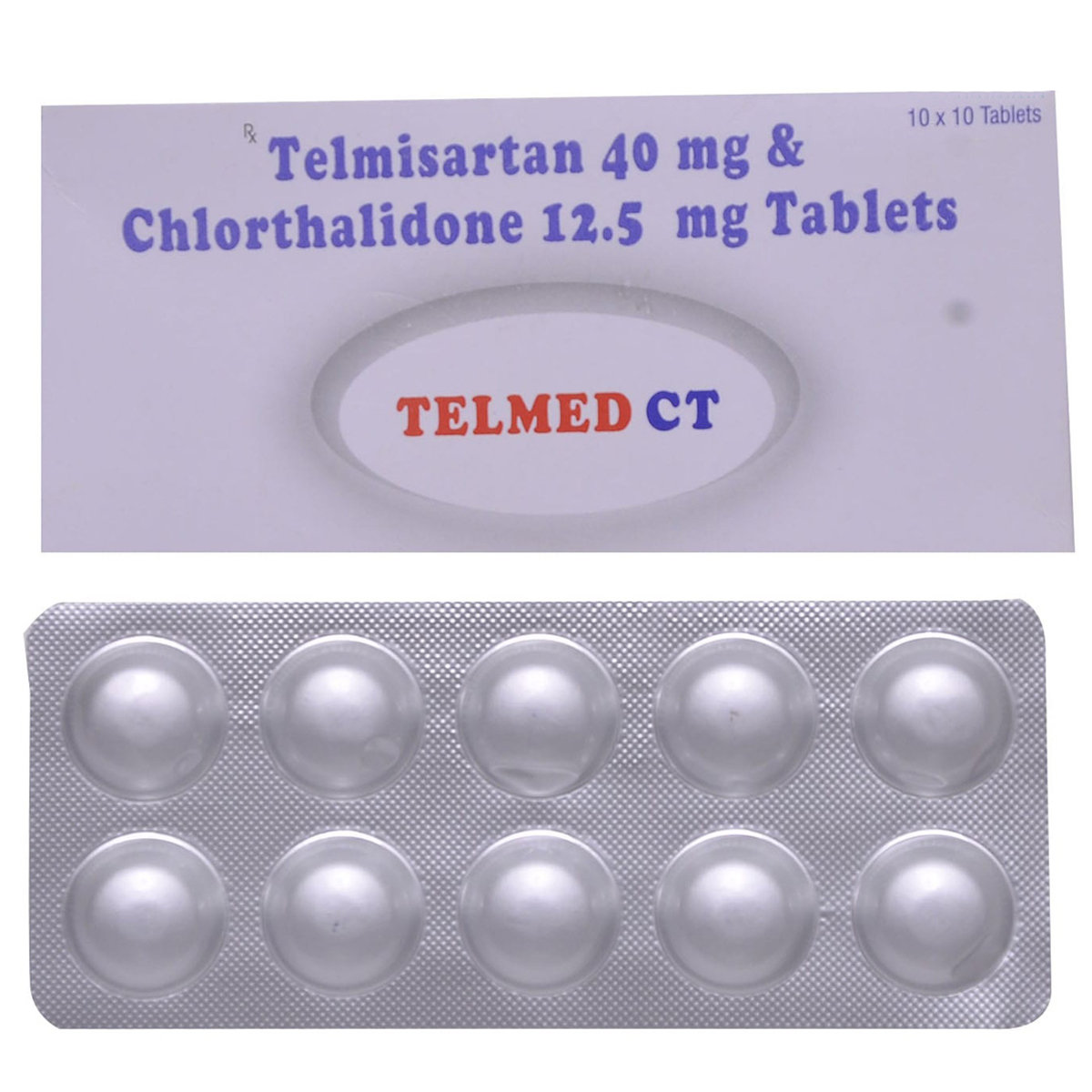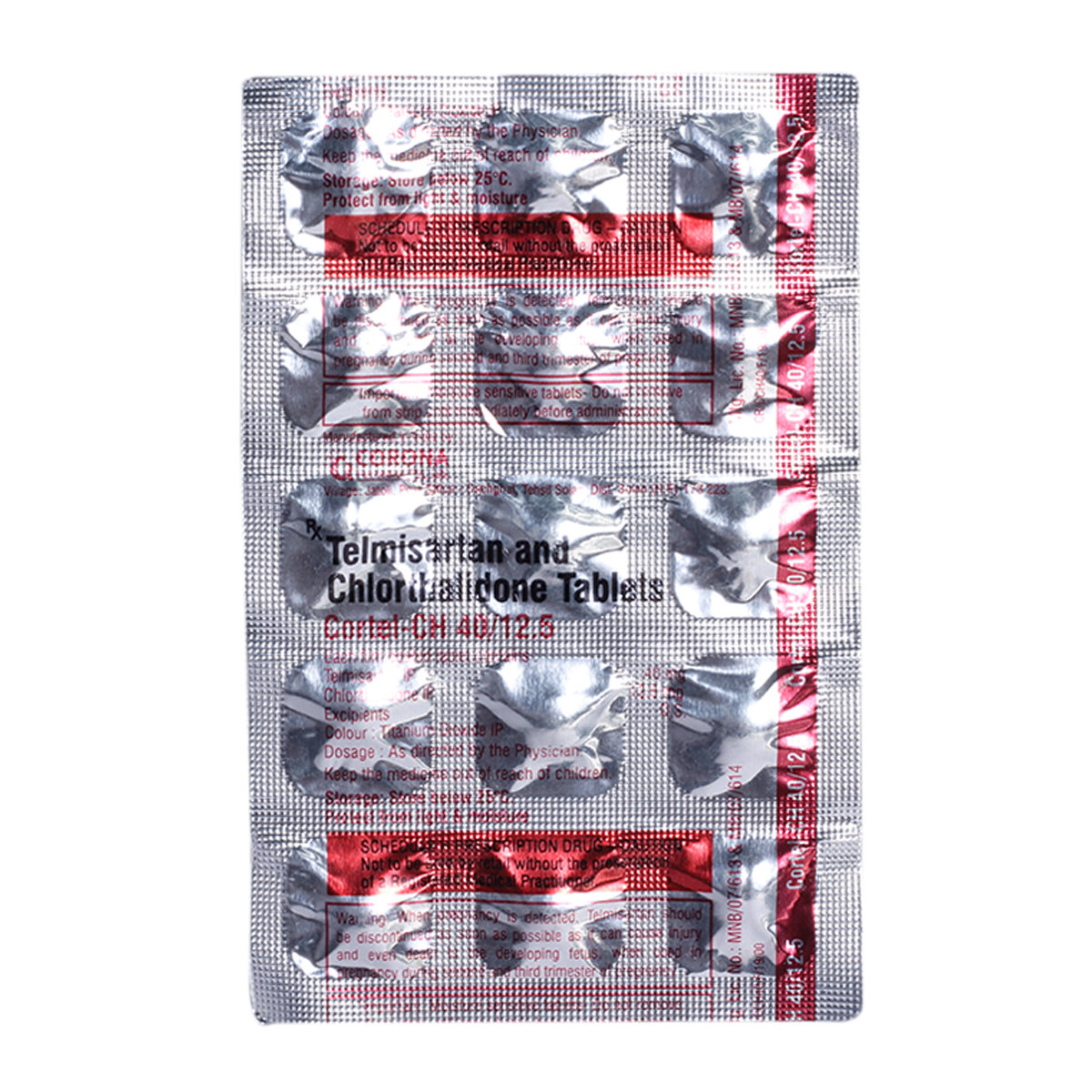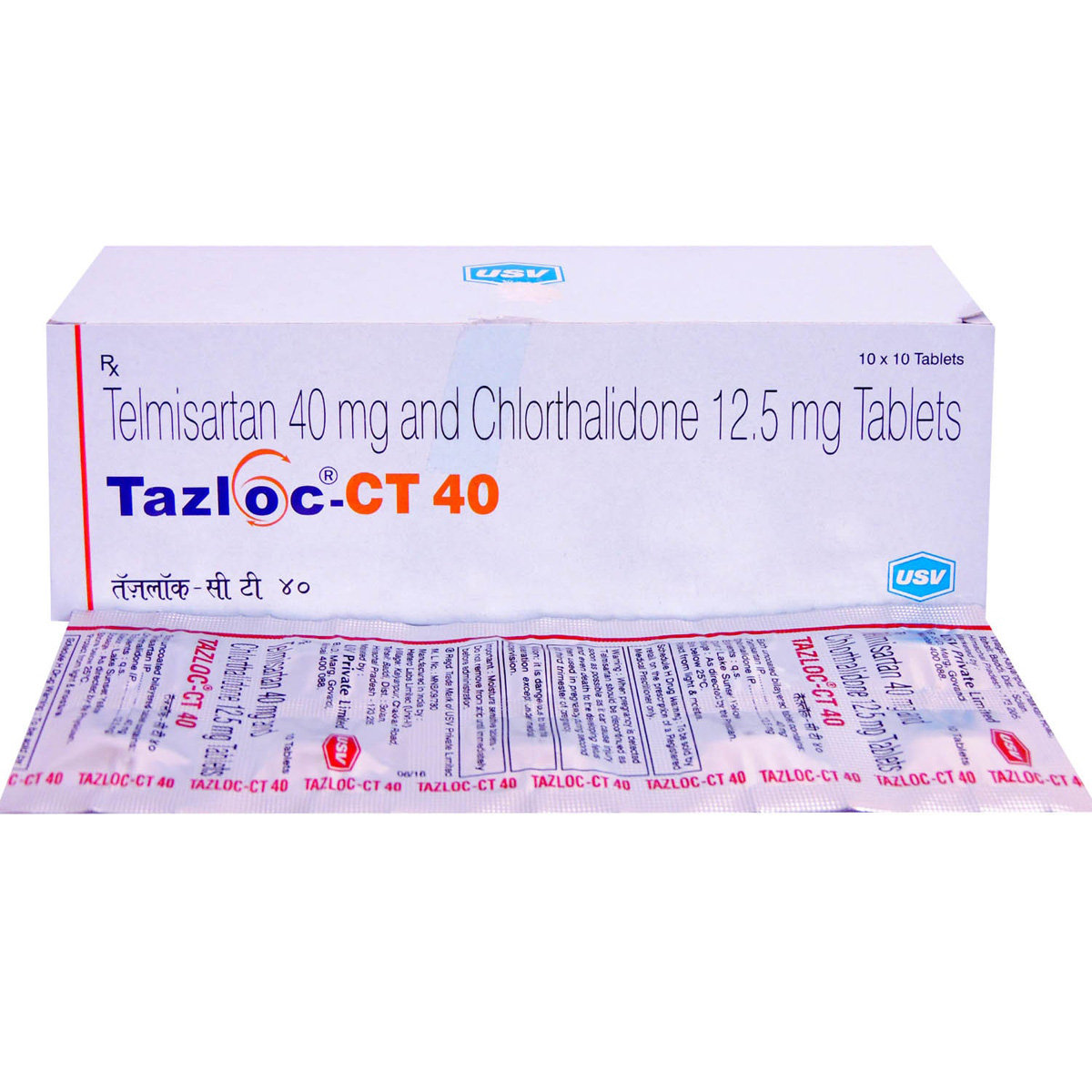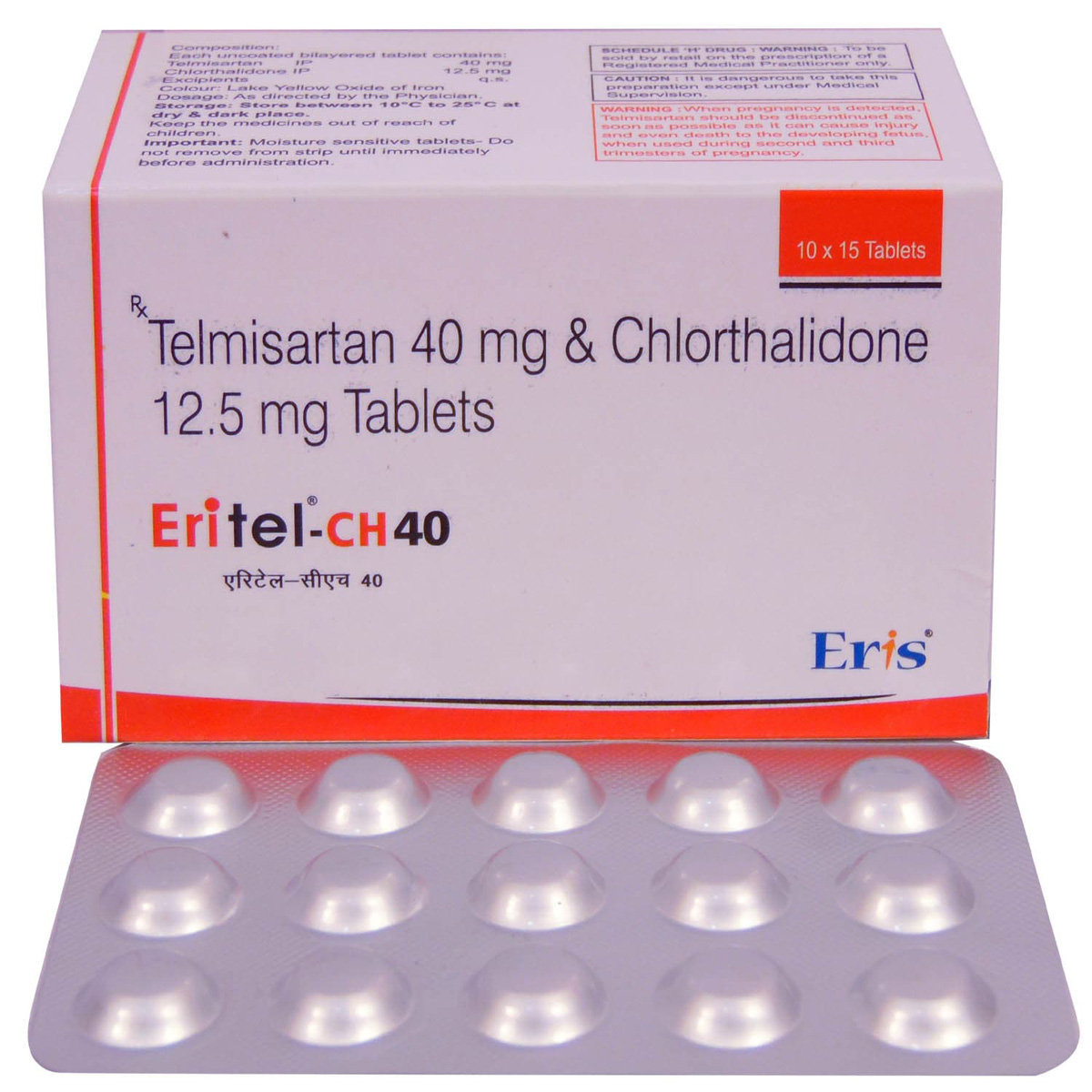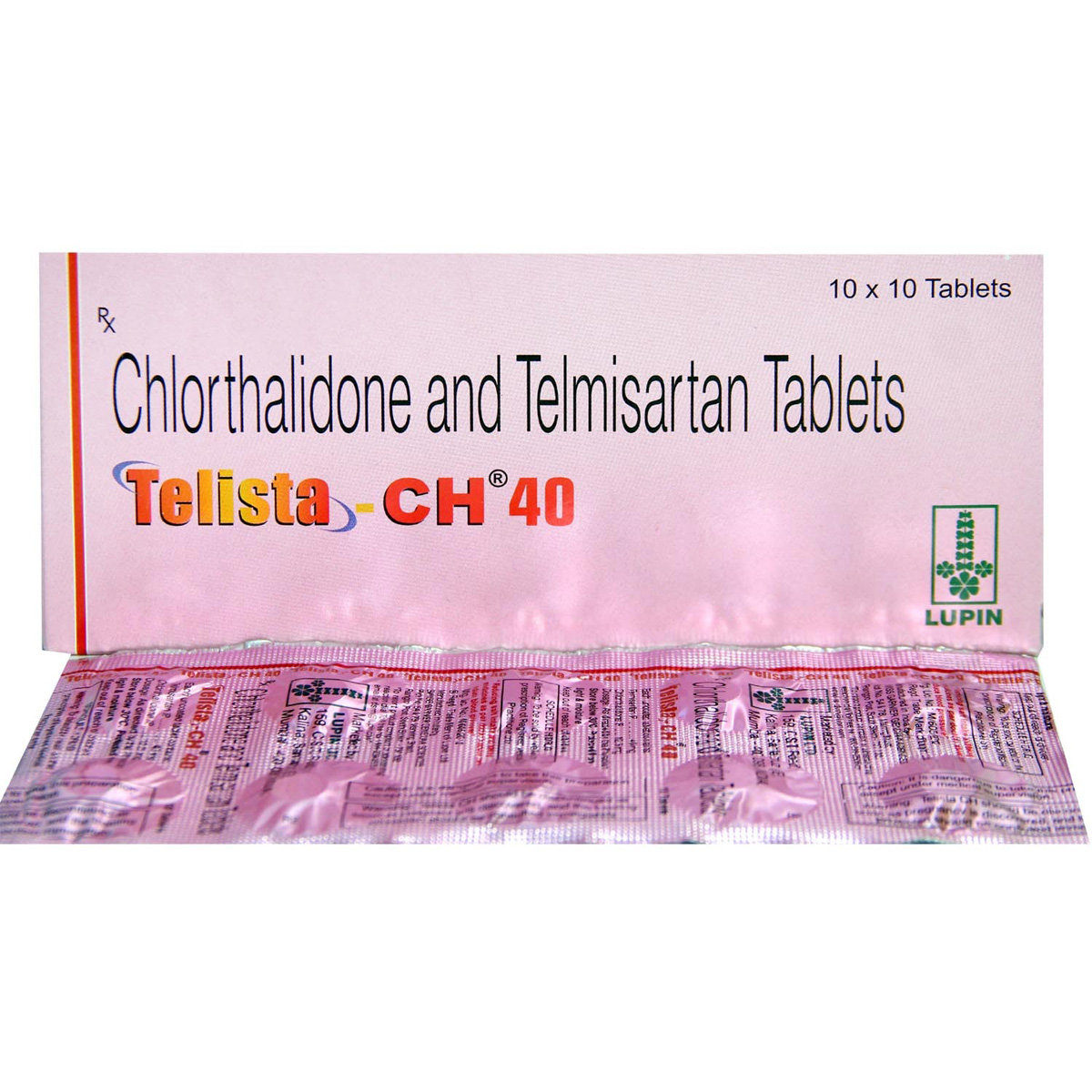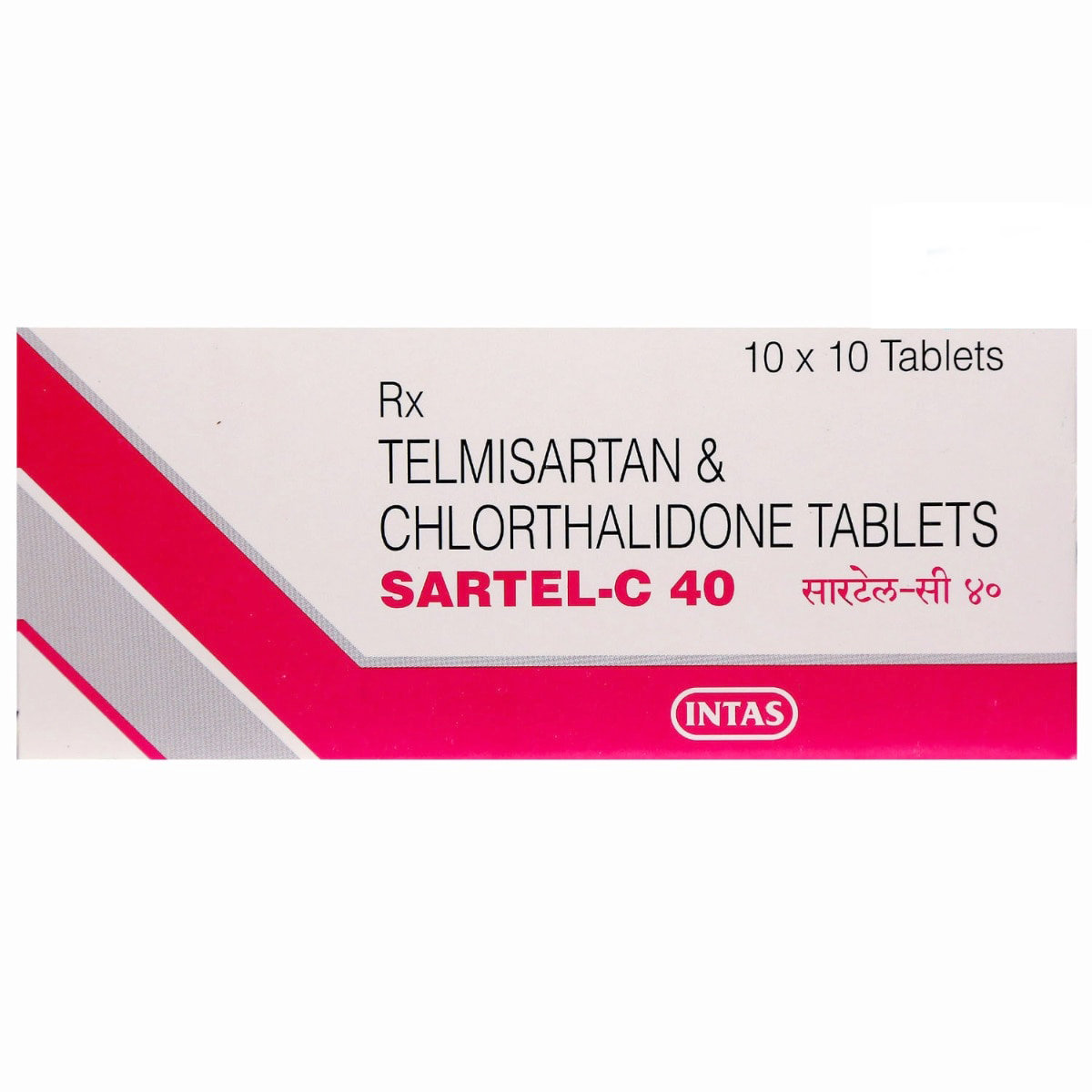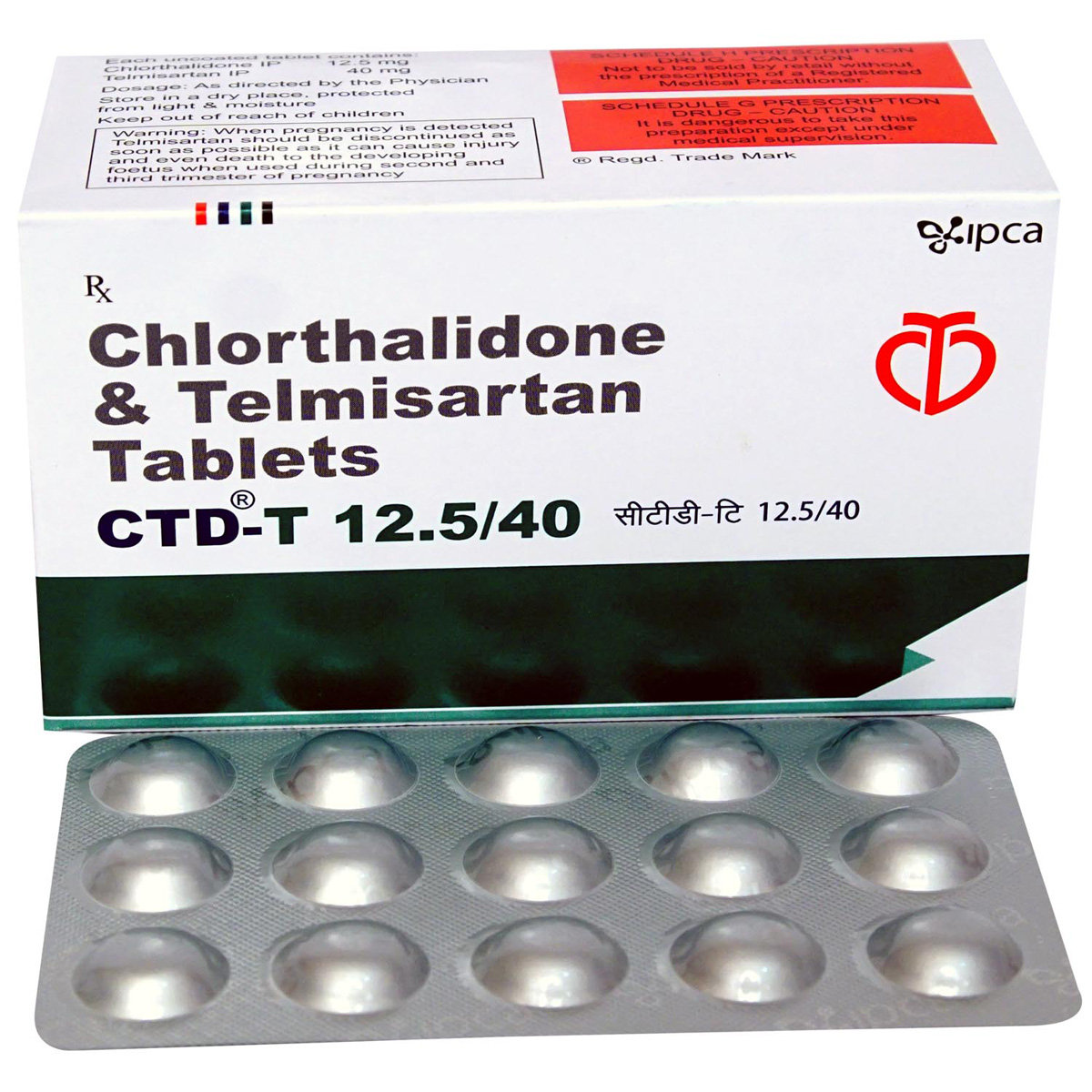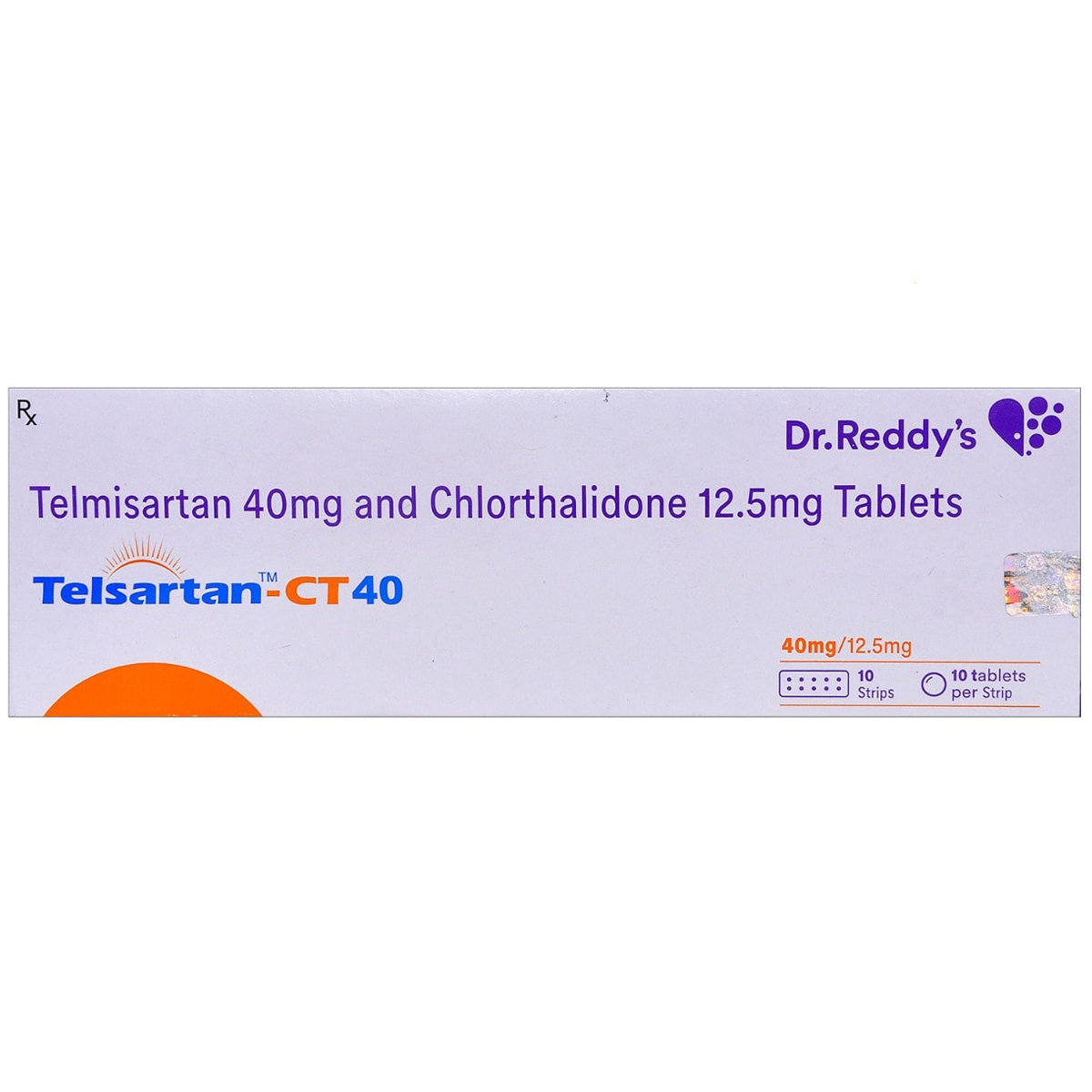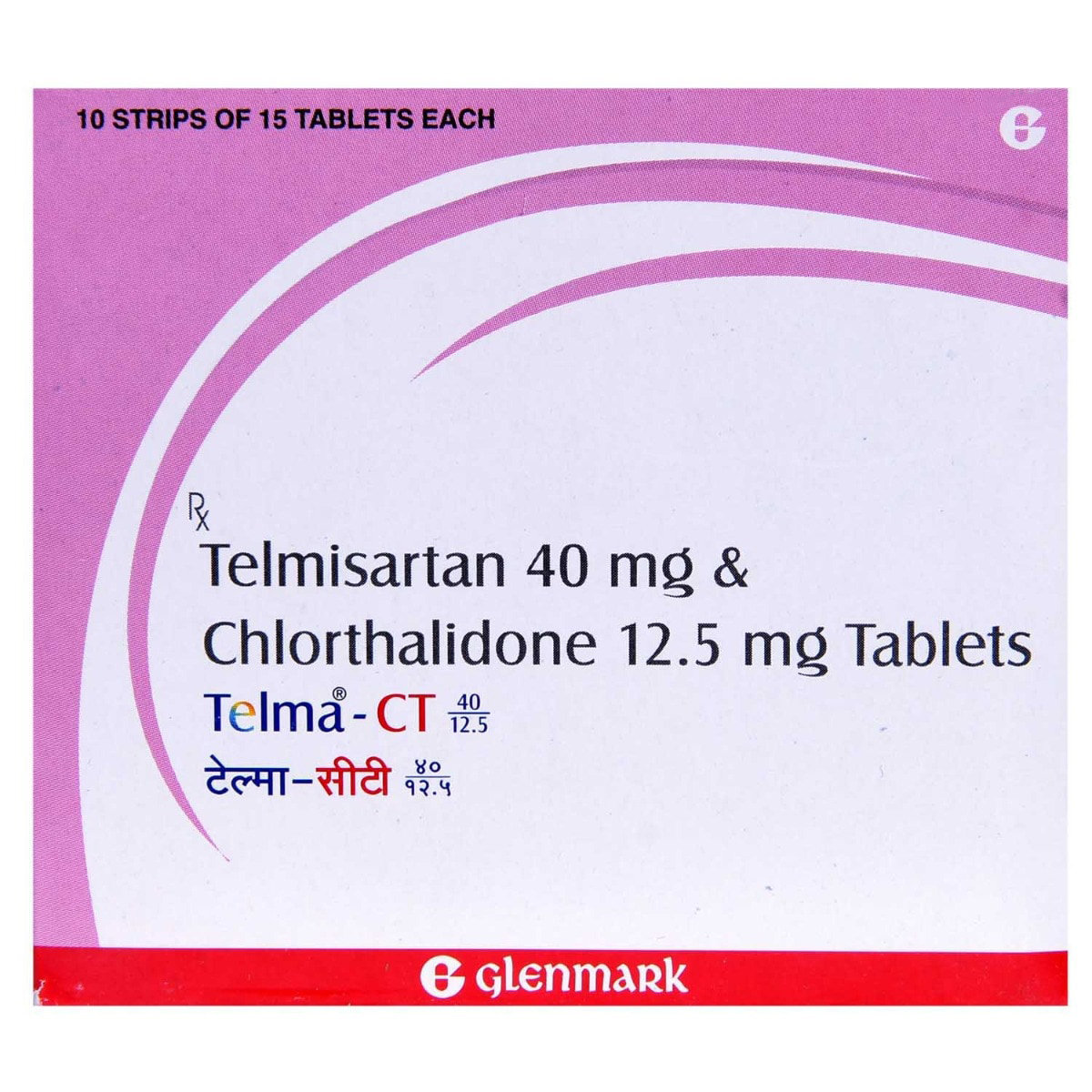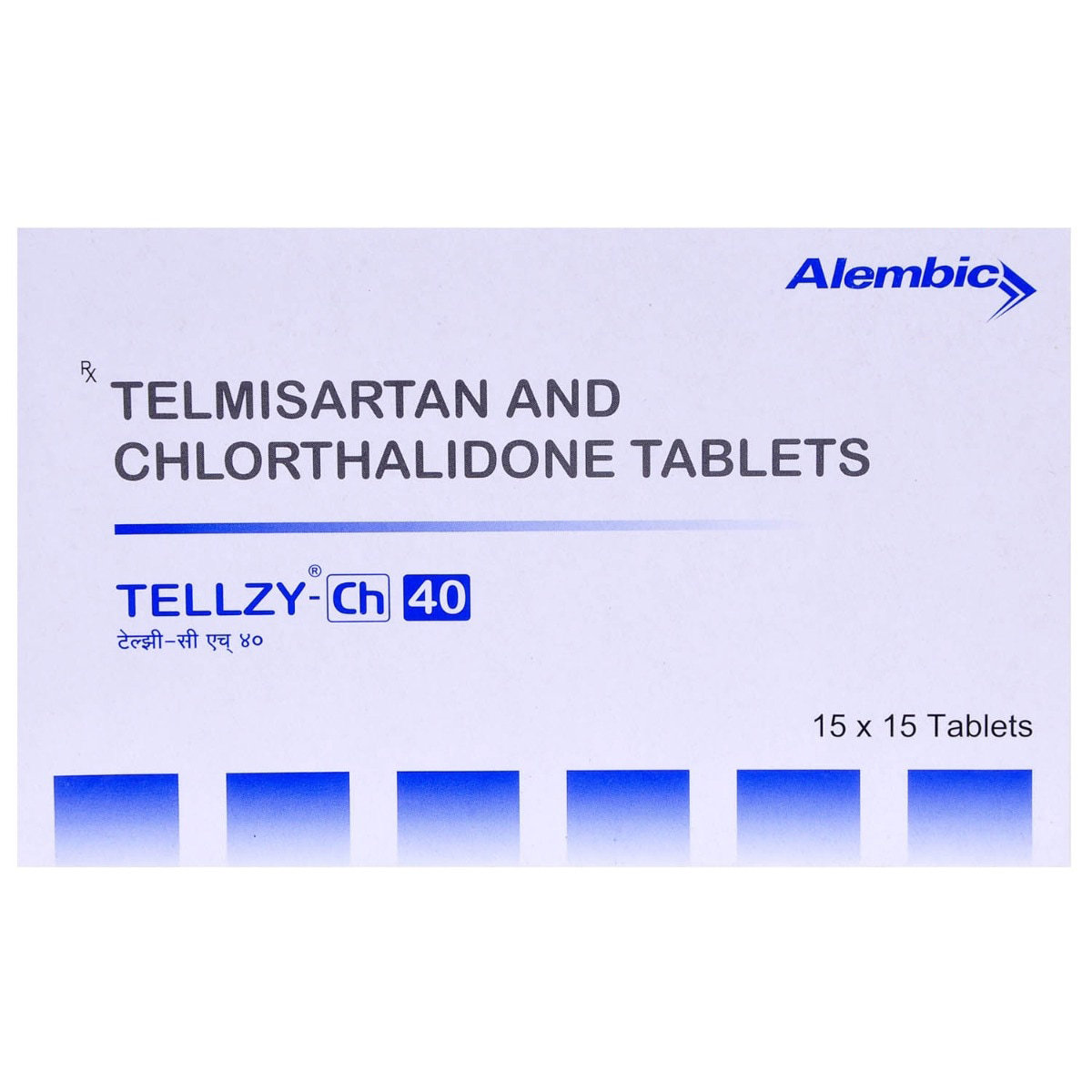Telapp 40 CH Tablet


MRP ₹116.5
(Inclusive of all Taxes)
₹17.5 Cashback (15%)
know your delivery time
Provide Delivery Location
Composition :
Manufacturer/Marketer :
Consume Type :
Expires on or after :
Return Policy :

Secure Payment

Trusted by 8 Crore Indians

Genuine Products
Therapeutic Class
Country of origin
Manufacturer/Marketer address
Disclaimer
Alcohol
Safe if prescribed
You are recommended not to consume alcohol and Telapp 40 CH Tablet to avoid unpleasant side effects like drowsiness, dizziness, and liver damage.
Pregnancy
Consult your doctor
Telapp 40 CH Tablet is not recommended during pregnancy as it is a category D pregnancy drug. This medicine may cause fetal damage and can affect the unborn baby (fetus).
Breast Feeding
Consult your doctor
Telapp 40 CH Tablet is known to pass breast milk, but its effect on the baby is not known. So, before breastfeeding, let your doctor know about this. Either you need to stop breastfeeding for using Telapp 40 CH Tablet , or you need to stop takingTelapp 40 CH Tablet .
Driving
Safe if prescribed
Drive with caution, Telapp 40 CH Tablet usually causes drowsiness and affects driving ability.
Liver
Consult your doctor
Telapp 40 CH Tablet to be taken with caution, especially if you have had a history of liver disease. Your doctor will have to change the dosage depending on your medical condition and your reaction to treatment.
Kidney
Consult your doctor
Not recommended in patients with chronic kidney disease (severe renal impairment). Safety and effectiveness in patients with severe renal impairment have not been established.
Children
Safe if prescribed
Efficacy and safety of Telapp 40 CH Tablet have not been established in children. If prescribed, it should be strictly under medical supervision and only if the benefits overweight the harms.
Product Substitutes
Reference
- https://www.ciplamed.com/content/techlor-tablets
- https://www.accessdata.fda.gov/drugsatfda_docs/label/2018/019574s016lbl.pdf
- https://www.accessdata.fda.gov/drugsatfda_docs/appletter/2012/020850s035ltr.pdf
- https://www.drugs.com/pregnancy/telmisartan.html
- https://www.drugs.com/drug-interactions/chlorthalidone.html
- https://www.drugs.com/drug-interactions/telmisartan.html
About Telapp 40 CH Tablet
Telapp 40 CH Tablet belongs to the class of anti-hypertensives primarily taken to treat hypertension (high blood pressure). Hypertension or high blood pressure is a life-long or chronic condition in which the blood pressure against the artery wall becomes too high. It can lead to the risk of heart diseases, like heart attack and stroke.
Telapp 40 CH Tablet is a combination of Telmisartan (angiotensin II receptor antagonist) and Chlorthalidone (thiazide diuretic or water pill). Telmisartan is an angiotensin receptor blocker that helps to relax and widen the blood vessels (arteries). Chlorthalidone is a diuretic that prevents absorption of excess salt in the body, preventing fluid retention. Together it lowers blood pressure and prevents the risk of any future stroke, heart attack, and oedema (fluid retention).
You can take Telapp 40 CH Tablet with food or an empty stomach. It should be swallowed whole with a glass of water. Your doctor will advise you on how often you take your tablets based on your medical condition. In some cases, you may experience dizziness, feeling tired, skin ulcers, diarrhoea, nausea diarrhoea, back pain, and cold/flu symptoms. Most of these side effects of Telapp 40 CH Tablet do not require medical attention and gradually resolve over time. However, if the side effects are persistent, reach out to your doctor.
Do not use potassium supplements or salt substitutes unless the doctor has told you. In rare cases, Telapp 40 CH Tablet can cause a condition that results in a skeletal muscle problem, leading to further kidney failure. If you notice unexplained muscle pain, dark colour urine, tenderness, or weakness, especially if you also have a fever or unexplained tiredness, immediately contact the doctor. If you suspect pregnancy while taking Telapp 40 CH Tablet , tell your doctor right away. Telapp 40 CH Tablet should not be taken if you are breastfeeding as Telapp 40 CH Tablet can pass into breast milk, so before starting Telapp 40 CH Tablet , you need to stop nursing or do not take Telapp 40 CH Tablet while breastfeeding. Besides this, you should not use the Telapp 40 CH Tablet if you are unable to urinate. If you have diabetes, do not use Telapp 40 CH Tablet with any medication that contains aliskiren (a blood pressure medicine). Before taking Telapp 40 CH Tablet , tell your doctor if you have ever had liver disease, kidney failure, glaucoma (increased eye pressure), high or low levels of magnesium or potassium in your blood, have allergies or asthma, lupus (an autoimmune disease), diabetes, or an allergy to penicillin or sulfa drugs.
Uses of Telapp 40 CH Tablet
Medicinal Benefits Mweb
Key Benefits
Telapp 40 CH Tablet belongs to the class of anti-hypertensives primarily taken to treat hypertension (high blood pressure). Telapp 40 CH Tablet is a combination of Telmisartan (angiotensin II receptor antagonist) and Chlorthalidone (thiazide diuretic or water pill). Telapp 40 CH Tablet works by relaxing and widening the blood vessels (arteries), making the heart more efficient at pumping blood throughout the body. It helps to lower high blood pressure, thus reduces the chances of future heart attack and stroke. Besides this, it prevents excessive water and electrolytes (like sodium, potassium, etc.) from the body through urine which can otherwise raise high blood pressure. In addition to this, Telapp 40 CH Tablet also reduces the future risk of any stroke or heart attack.
Directions for Use
Side Effects of Telapp 40 CH Tablet
- Dizziness
- Feeling tired
- Nausea
- Skin ulcers
- Diarrhoea
- Back pain
- Cold/flu symptoms
Drug Warnings
Telapp 40 CH Tablet should not be given to the people allergic to Telapp 40 CH Tablet or any of its ingredients, have low blood pressure (less than 90 mm of Hg), have had a heart attack, kidney disease, liver disease, pregnant women, or planning to get pregnant and breastfeeding women. It should be used with caution in patients who have diabetes. Besides this, it is contraindicated in low blood pressure (hypotension), cardiogenic shock (sudden stopping of blood flow to the heart), and aortic stenosis (heart valve problem). Telapp 40 CH Tablet can pass into breast milk, so before starting Telapp 40 CH Tablet , either you need to stop nursing, or you should not take Telapp 40 CH Tablet while breastfeeding. If you have anuria (non-passage of urine), please do not take Telapp 40 CH Tablet as it is contra-indicated in it and may lead to further complications.
Drug-Drug Interactions
Drug-Drug Interactions
Login/Sign Up
Co-administration of Aliskiren with Telapp 40 CH Tablet can increase the risk of hyperkalemia (high potassium levels in the blood).
How to manage the interaction:
Taking Telapp 40 CH Tablet with Aliskiren can possibly lead to an interaction, please consult a doctor before taking it. Do not discontinue the medications without consulting a doctor.
Co-administration of Telapp 40 CH Tablet and cisapride may increase the risk or severity of an irregular heart rhythm that may be serious.
How to manage the interaction:
Taking Telapp 40 CH Tablet with Cisapride is not recommended, please consult your doctor before taking it. Do not discontinue the medication without consulting a doctor.
Co-administration of Telapp 40 CH Tablet may significantly increase the blood levels of lithium.
How to manage the interaction:
Although there is a possible interaction, Telapp 40 CH Tablet can be taken with lithium if prescribed by the doctor. Consult the prescriber if you experience symptoms of lithium intoxication such as drowsiness, dizziness, confusion, loose stools, vomiting, muscle weakness, muscle incoordination, shaking of hands and legs, blurred vision, ringing in the ear, excessive thirst, or increased urination. Do not discontinue the medication without consulting a doctor.
Co-administration of Potassium acetate can make Telapp 40 CH Tablet more likely to cause high levels of potassium in the blood.
How to manage the interaction:
Although taking Potassium acetate and Telapp 40 CH Tablet together can evidently cause an interaction, it can be taken if your doctor has suggested it. Do not stop using any medications without a doctor's advice.
Taking ramipril with Telapp 40 CH Tablet may increase the risk of side effects such as low blood pressure, kidney function impairment, and high blood potassium.
How to manage the interaction:
Although there is a possible interaction, Telapp 40 CH Tablet can be taken with ramipril if prescribed by the doctor. Consult the prescriber if you experience symptoms of high potassium such as nausea, vomiting, weakness, confusion, tingling of the hands and feet, feelings of heaviness in the legs, a weak pulse, or a slow or irregular heartbeat. Maintain adequate fluid intake during treatment with these medications. Do not discontinue the medications without consulting a doctor.
Taking Potassium citrate with Telapp 40 CH Tablet together may increase potassium levels in the blood, which can lead to kidney failure, muscular paralysis, and abnormal heart rhythm.
How to manage the interaction:
Although taking Potassium citrate with Telapp 40 CH Tablet together can possibly result in an interaction, it can be taken if a doctor has advised it. However, consult the doctor if you experience nausea, vomiting, weakness, disorientation, tingling in your hands and feet, feelings of heaviness in your legs, a weak pulse, or a slow or irregular heartbeat. It is essential to maintain proper fluid intake while taking these medications. It is advised to reduce the intake of potassium-rich foods. Do not discontinue any medications without a doctor's advice.
Taking Potassium Iodide with Telapp 40 CH Tablet can make high levels of potassium in the blood more likely.
How to manage the interaction:
Although taking Potassium iodide and Telapp 40 CH Tablet together can evidently cause an interaction, it can be taken if your doctor has suggested it. Do not stop using any medications without a doctor's advice.
Taking lisinopril with Telapp 40 CH Tablet may increase the levels of potassium in blood.
How to manage the interaction:
Although there is a possible interaction, Telapp 40 CH Tablet can be taken with lisinopril if prescribed by the doctor. Consult the prescriber if you experience symptoms of high potassium such as nausea, vomiting, weakness, confusion, tingling of the hands and feet, feelings of heaviness in the legs, a weak pulse, or a slow or irregular heartbeat. Maintain adequate fluid intake during treatment with these medications.
Taking spironolactone with Telapp 40 CH Tablet may increase potassium levels in the blood.
How to manage the interaction:
Although there is a possible interaction, Telapp 40 CH Tablet can be taken with spironolactone if prescribed by the doctor. Consult the prescriber if you experience symptoms of high potassium such as nausea, vomiting, weakness, confusion, tingling of the hands and feet, feelings of heaviness in the legs, a weak pulse, or a slow or irregular heartbeat. Maintain adequate fluid intake during treatment with these medications. Do not discontinue the medications without consulting a doctor.
Coadministration of enalapril with Telapp 40 CH Tablet may increase the risk of hyperkalemia (high potassium levels in the blood), hypotension, syncope (fainting), and renal failure due to additive or synergistic effects. If you are elderly, dehydrated, or have a history of renal or heart illness, your risk is enhanced.
How to manage the interaction:
Although taking Enalapril together with Telapp 40 CH Tablet may possibly result in an interaction, they can be taken together if prescribed by your doctor. However, contact your doctor immediately if you experience signs and symptoms of hyperkalemia, such as nausea, vomiting, confusion, numbness, tingling in hands and feet, and irregular heartbeat. It is advised to limit the intake of potassium-rich foods like tomatoes, bananas, papayas, mangoes, beans, and potassium-containing supplements. Do not discontinue any medication without consulting your doctor.
Drug-Food Interactions
Drug-Food Interactions
Login/Sign Up
Lentils, Orange Juice, Oranges, Raisins, Potatoes, Salmon Dried, Spinach, Sweet Potatoes, Tomatoes, Coconut Water, Beans, Beetroot, Broccoli, Bananas, Apricots, Avocado, Yogurt
How to manage the interaction:
Taking Telapp 40 CH Tablet along with potassium-containing salt substitutes or over-the-counter potassium supplements it may lead to high potassium levels in blood. Avoid high potassium rich food while taking Telapp 40 CH Tablet as it can possibly result in an interaction. However, consult a doctor if you experience weakness, irregular heartbeat, confusion and feelings of heaviness in the legs.
Drug-Diseases Interactions
Drug-Diseases Interactions
Login/Sign Up
Drug-Drug Interactions Checker List
- LITHIUM
- DIGOXIN
- ASPIRIN
- METFORMIN
- INSULIN
- SILDENAFIL
- SIMVASTATIN
- CYCLOSPORINE
- ATENOLOL
- ALISKIREN
- ENALAPRIL
- LISINOPRIL
- RAMIPRIL
- METOPROLOL
- IBUPROFEN
Habit Forming
Special Advise
- Regularly monitor blood pressure levels to prevent hypotension (low blood pressure).
- Get up slowly while rising from lying or sitting position as Telapp 40 CH Tablet may cause dizziness.
Diet & Lifestyle Advise
- Keep your weight under control with a BMI of 19.5-24.9.
- Do regular physical activity or exercise for at least 150 minutes per week, or about 30 minutes most days of the week. Doing this can help you to lower your raised blood pressure by about 5 mm of Hg.
- Limit intake of sodium chloride (table salt) in your daily diet to 2300 mg per day or less than 1500 mg is ideal for most adults.
- If you are taking alcohol, then only one serving for women and two servings is advisable.
- Quitting smoking is the best strategy to lower the risk of heart disease.
- Avoid chronic stress as it can raise your blood pressure. Try to enjoy and spent time with your loved ones to cope with stress and practice mindfulness techniques.
- Monitor your blood pressure daily and if there is too much fluctuation, then immediately contact your doctor.
- Try to include heart-healthy omega-3 fatty acids containing food drinks in your daily diet. You can also use low-fat cooking oil like olive oil, soybean oil, canola oil, and coconut oil to lower your elevated blood pressure.
All Substitutes & Brand Comparisons
RX
Telvas-CT 40 Tablet 10's
Aristo Pharmaceuticals Pvt Ltd
₹93.5
(₹8.42 per unit)
19% CHEAPERRX
Telmikind CT 40 Tablet 10's
Mankind Pharma Pvt Ltd
₹104
(₹9.37 per unit)
10% CHEAPERRX
Telpres CT 40 mg/12.5 mg Tablet 15's
Abbott India Ltd
₹158.5
(₹9.51 per unit)
9% CHEAPER

Have a query?
Buy best Cardiology products by
Torrent Pharmaceuticals Ltd
Sun Pharmaceutical Industries Ltd
Lupin Ltd
Intas Pharmaceuticals Ltd
Cipla Ltd
Micro Labs Ltd
Macleods Pharmaceuticals Ltd
Abbott India Ltd
Ajanta Pharma Ltd
Ipca Laboratories Ltd
Eris Life Sciences Ltd
Mankind Pharma Pvt Ltd
Lloyd Healthcare Pvt Ltd
Dr Reddy's Laboratories Ltd
Glenmark Pharmaceuticals Ltd
Emcure Pharmaceuticals Ltd
Alembic Pharmaceuticals Ltd
Alkem Laboratories Ltd
East West Pharma India Pvt Ltd
USV Pvt Ltd
Zydus Healthcare Ltd
Aristo Pharmaceuticals Pvt Ltd
Elbrit Life Sciences Pvt Ltd
J B Chemicals & Pharmaceuticals Ltd
Zydus Cadila
Akumentis Healthcare Ltd
Alteus Biogenics Pvt Ltd
Hbc Life Sciences Pvt Ltd
Fusion Health Care Pvt Ltd
Troikaa Pharmaceuticals Ltd
La Renon Healthcare Pvt Ltd
Corona Remedies Pvt Ltd
Jubilant Lifesciences Ltd
Medley Pharmaceuticals Ltd
Knoll Healthcare Pvt Ltd
Msn Laboratories Pvt Ltd
Zuventus Healthcare Ltd
Cadila Pharmaceuticals Ltd
Blue Cross Laboratories Pvt Ltd
Lividus Pharmaceuticals Pvt Ltd
Morepen Laboratories Ltd
Ranmarc Labs
Shrrishti Health Care Products Pvt Ltd
Sanofi India Ltd
Steris Healthcare
Elder Pharmaceuticals Ltd
Primus Remedies Pvt Ltd
Unison Pharmaceuticals Pvt Ltd
Eswar Therapeutics Pvt Ltd
Knoll Pharmaceuticals Ltd
Tas Med India Pvt Ltd
Systopic Laboratories Pvt Ltd
Indiabulls Pharmaceuticals Pvt Ltd
Leeford Healthcare Ltd
Sinsan Pharmaceuticals Pvt Ltd
Biochem Pharmaceutical Industries Ltd
Cadila Healthcare Ltd
Azkka Pharmaceuticals Pvt Ltd
Nirvana India Pvt Ltd
Orsim Pharma
Prevego Healthcare & Research Pvt Ltd
Econ Healthcare
Elinor Pharmaceuticals (P) Ltd
FDC Ltd
Sunij Pharma Pvt Ltd
Nicholas Piramal India Ltd
Astra Zeneca Pharma India Ltd
Pfizer Ltd
Lia Life Sciences Pvt Ltd
Shine Pharmaceuticals Ltd
Elicad Pharmaceuticals Pvt Ltd
Indoco Remedies Ltd
Proqol Health Care Pvt Ltd
Vasu Organics Pvt Ltd
Biocon Ltd
Opsis Care Lifesciences Pvt Ltd
Johnlee Pharmaceuticals Pvt Ltd
Merck Ltd
Wockhardt Ltd
Auspharma Pvt Ltd
Ergos Life Sciences Pvt Ltd
Lakshya Life Sciences Pvt Ltd
Ordain Health Care Global Pvt Ltd
Pficus De Med Pvt Ltd
ALICAN PHARMACEUTICAL PVT LTD
RPG Life Sciences Ltd
Glynis Pharmaceuticals Pvt Ltd
Orris Pharmaceuticals
Samarth Life Sciences Pvt Ltd
Aprica Pharmaceuticals Pvt Ltd
Aretaeus Pharmaceuticals Pvt Ltd
Koye Pharmaceuticals Pvt Ltd
Neocardiab Care
Retra Life Science Pvt Ltd
Alniche Life Sciences Pvt Ltd
Alvio Pharmaceuticals Pvt Ltd
Arkas Pharma Pvt Ltd
Atos Lifesciences Pvt Ltd
Divine Savior Pvt Ltd
Metalis Lifesciences Pvt Ltd
Customers Also Bought
Recommended for a 30-day course: 3 Strips

